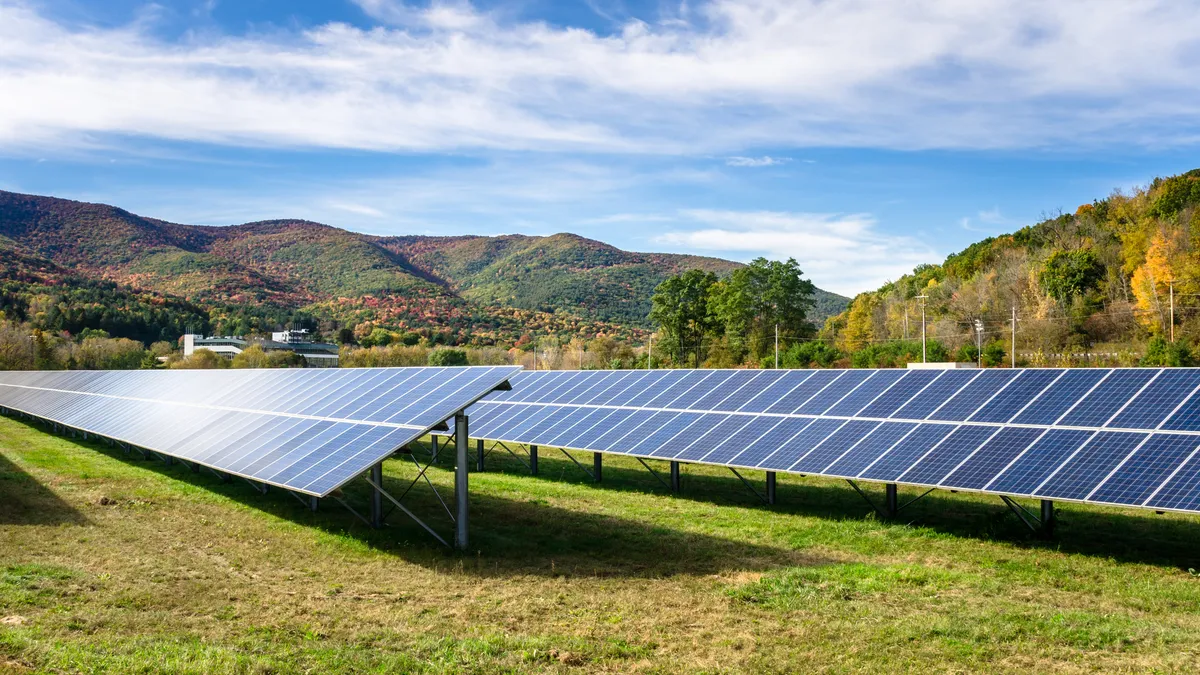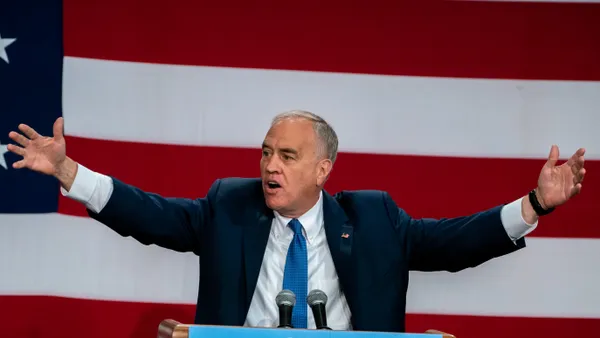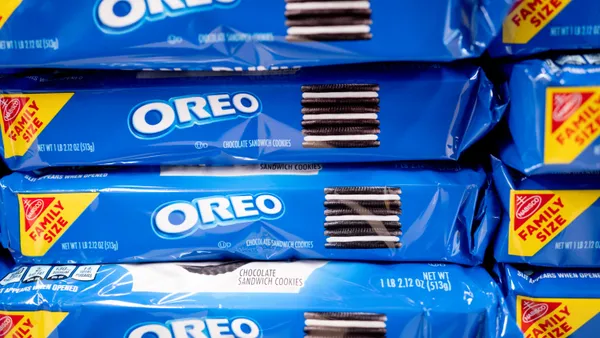Dive Brief:
- Mastercard announced Tuesday it will build a solar array on a site expanding 40 acres that it acquired at its Missouri tech hub and will update the heating and cooling systems at its Purchase, New York headquarters with geothermal energy to help reduce its emissions.
- The O’Fallon, Missouri tech hub is the global payments company’s largest facility, while the Purchase headquarters currently consumes the most natural gas out of any of Mastercard’s global offices, the company said in an email to ESG Dive Monday.
- Both sustainability-focused projects serve to help the company stay on track for its 2040 net-zero target and build climate resilience, Mastercard Chief Sustainability Officer Ellen Jackowski said in an interview Tuesday.
Dive Insight:
Mastercard announced in 2021 that it had accelerated its net-zero target date by a decade, from 2050 to 2040, with interim targets to reduce its scope 1 and scope 2 emissions by 38% and its scope 3 emissions 20% by 2025. These targets, based on a 2016 baseline, have been validated by the Science Based Targets initiative, which confirms that corporate net-zero targets are aligned with leading climate science.
The payments company has sourced 100% of its global power needs from renewable energy sources since 2019, Jackowski said, but the latest projects will allow the company to take it a step further.
“For us to stay on track to hit net zero, where we source our energy from, is increasingly important,” she said. “And for us, that means a commitment to using renewable energy.”
Mastercard opted for solar power in Missouri and geothermal for its New York headquarters because “they make sense for those areas,” Jackowski said. The CSO added that the payments services company had been having a hard time sourcing renewable energy for its tech hub, before finding land nearby it could acquire. The company then worked to engage with the community to explain how the project could mutually benefit both the company and locality.
“As more extreme weather events happen, having consistent access to energy is really important,” Jackowski said. “So part of this strategy is also about resilience. The resilience for ourselves when these extreme events happen, and then also for the surrounding community.”
The acquisition of acreage for solar panels to power the tech hub will allow Mastercard to take the power intensive facility off of the local grid once operational. Construction on the facility has recently started, a company spokesperson said. The company said in the release that it will preserve half of the acquired land and restore all of the trees it removes to complete the project.
Mastercard said in its Earth Day announcement that its Purchase headquarters is currently responsible for “more than half of [its] direct combustion of fossil fuels,” and the company saw “an opportunity to drastically reduce emissions” as the time came to replace its natural gas-powered heating and cooling system.
The company is in the process of drilling 160 holes, 600-feet-deep on the front lawn of its headquarters that will then connect to a heating and cooling system. The system that will siphon heat from the building in the summer and store it to be pumped back into the building in the winter will also be powered by renewable energy sources, according to the April 22 release.
“It's not just exciting from a progress point of view, but obviously all of our employees can physically see these things,” Jackowski said. “They see the drilling going on as they're walking into work at our headquarters. They can see it out the window where we're building the solar field [in Missouri].”
The company’s 2023 sustainability report was the first time Mastercard said its revenue growth had decoupled from its emissions. The company reported 13% year-over-year growth in net revenue, while the company’s total emissions decreased 1% over the same time period. The company’s 2024 report, currently in the works, will “continue on that trajectory,” according to Jackowski, who said that is still “very rare” to see.












